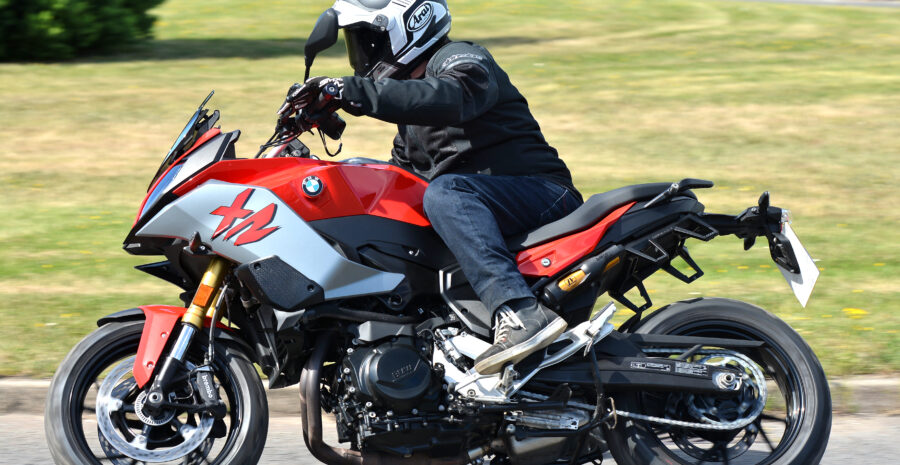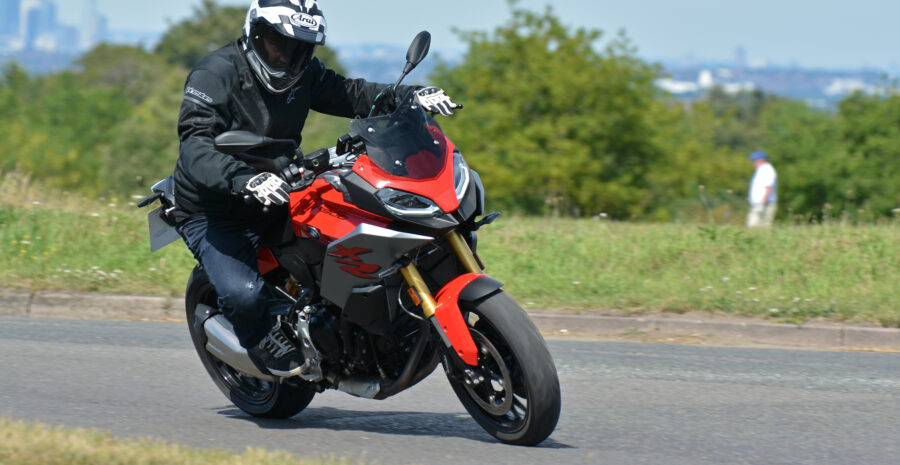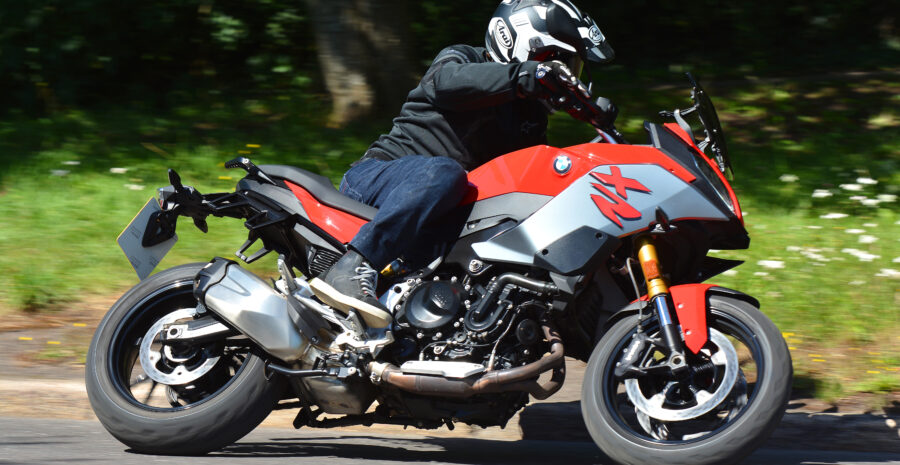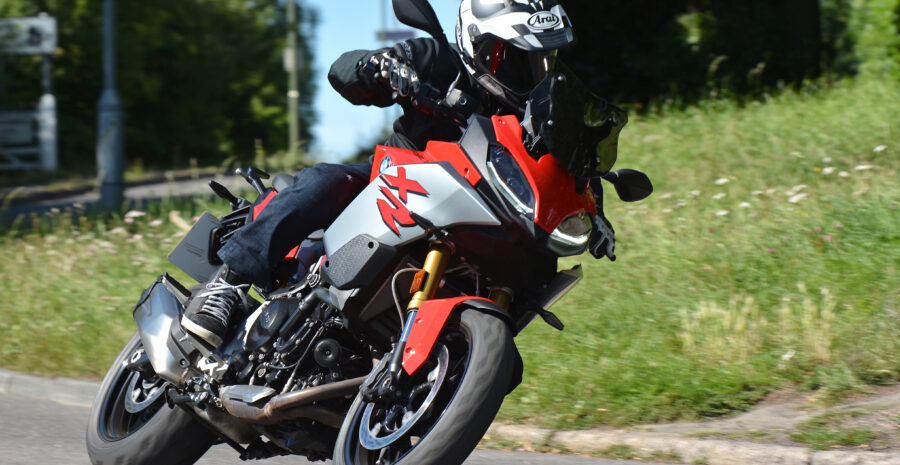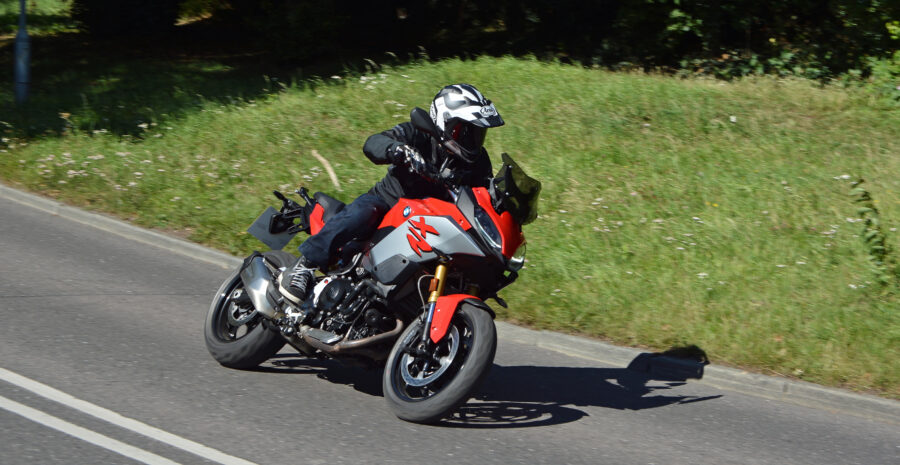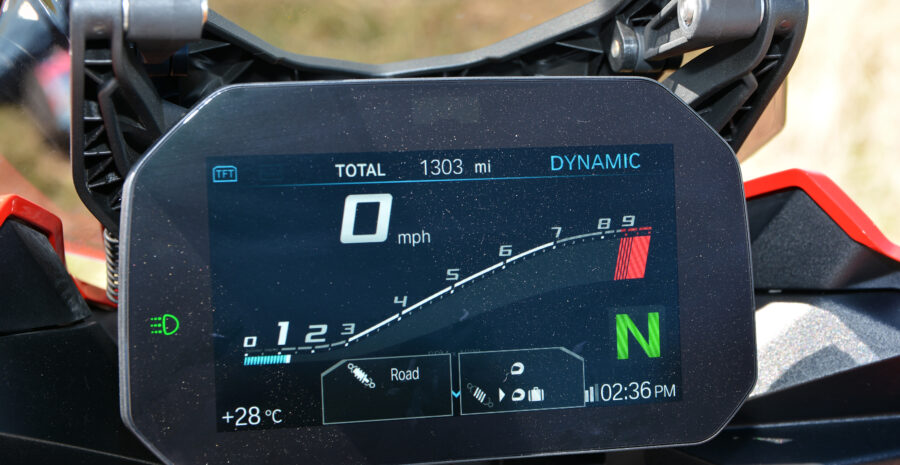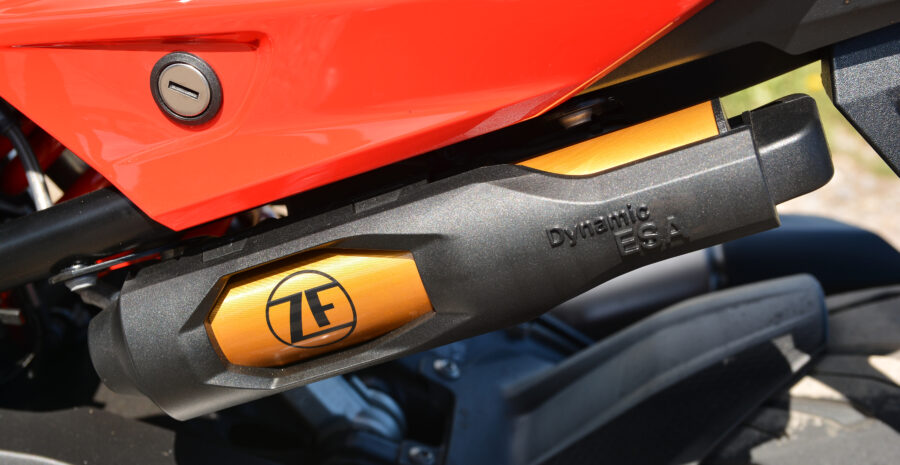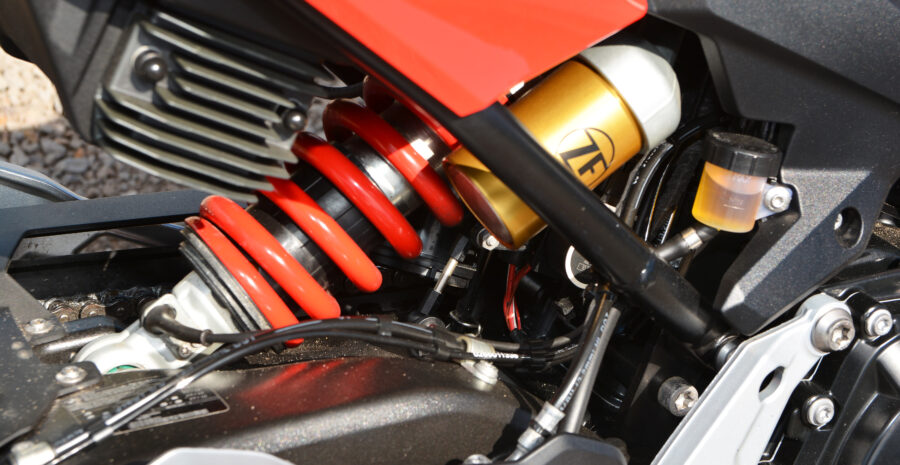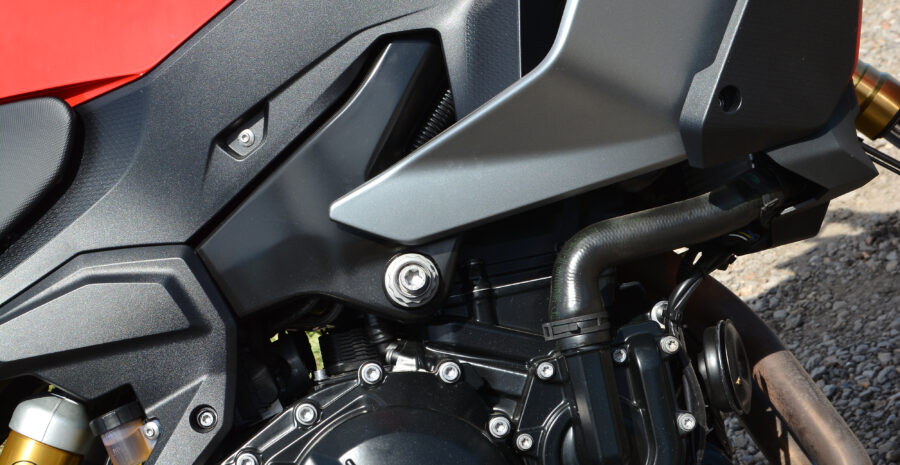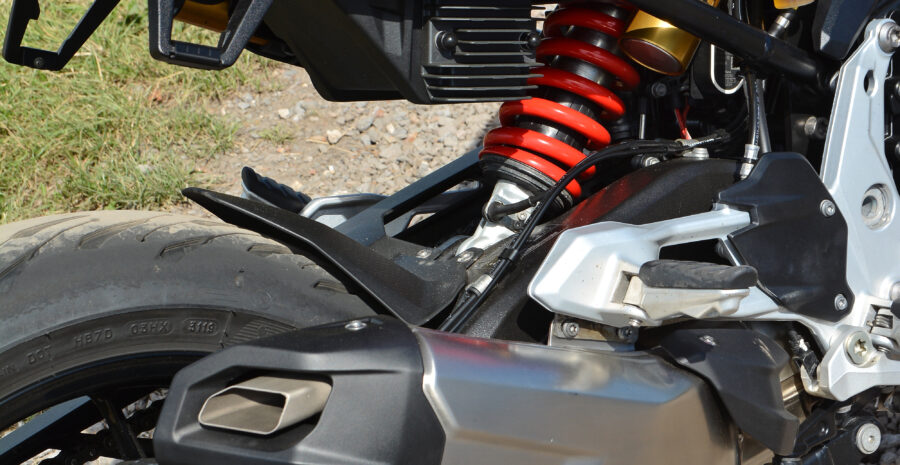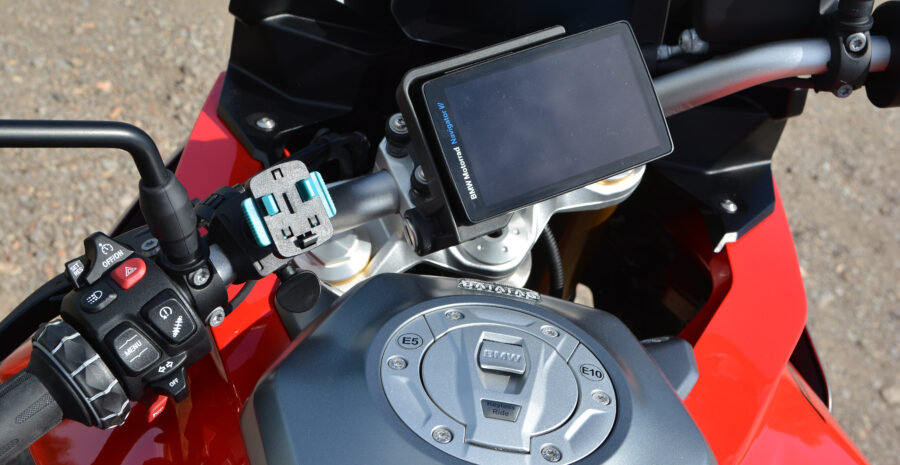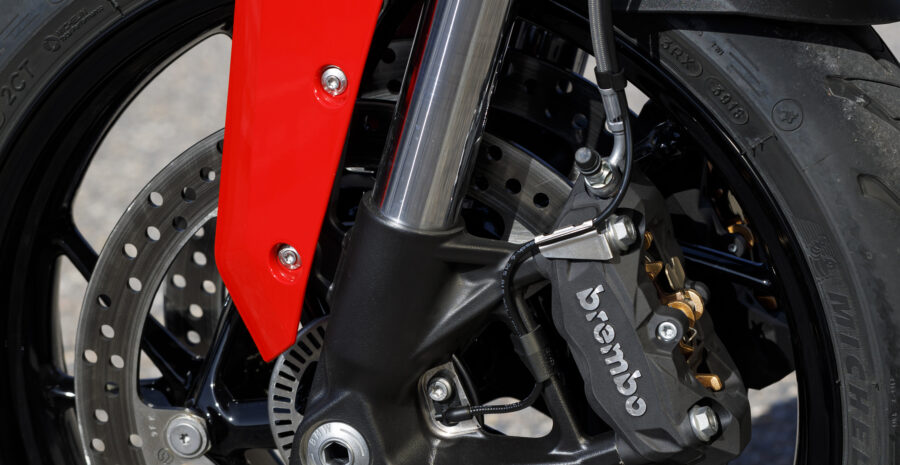Is bigger always better? That’s always been an excellent question in the bike world.
When I first passed my test, I was desperate – desperate! – to get as massive a machine as I could manage to insure.
Because back in the late 1980s, most smaller bikes had barely-adequate performance, and if you wanted to go at a decent pace, you needed at least a 600 four. Bigger was most definitely better.
Nowadays though, it’s not as clear-cut.
Okay, if you simply must have a 210bhp superbike, then a 120bhp 600 will never be good enough. And it’s fair to say that even the most outrageous full bore bikes are quite light and have excellent handling, braking and suspension setups now.
But for plenty of other riders, a smaller bike can often make more sense.
Want to go and do some serious off-road work? Then a Yamaha Ténéré 700 is probably a better option than the enormous XTZ1200 Super Ténéré. Spend most of your time around town? Ducati’s Monster 821 or 797 may well be more relaxing than the mighty 1200 S version.
And even when it comes to something like the heavyweight road-going adventure touring sector, less can still be more. Triumph’s Tiger 800 is a better bike than the humongous 260 kilo+ Tiger 1200, and while we love the Ducati 1260 Multistrada, plenty of owners say the 950 version makes more sense for them.
BMW offers smaller variants of its bikes too.
The legendary GS range, topped by the mighty 1250 Adventure, extends through the 850 and 750 middleweights and further down to the lightweight G 310 single. And now, for the first time, there’s a smaller option for fans of the firm’s S1000 XR – the F900 XR.
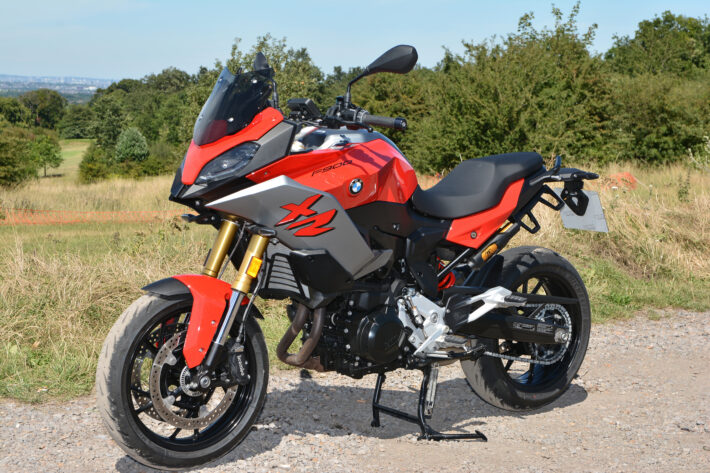
Launched in 2014, the original 999cc XR used a retuned version of the inline-four motor from the S1000 RR, in an ‘adventure sport’ layout.
So you got longer-travel suspension and a hint of adventure bike styling, but minimal genuine dirt ability, made up for by a mental 160bhp engine and loads of high-tech kit.
It’s a superb way to cover large distances, and alongside the Multistrada 1200, re-defined what a big adventure bike could be like: you can now have a superbike engine and chassis, on stilts, with armchair accommodation.
The S1000 XR has been a hit for BMW, and plenty of folk have plumped for it as a fast, practical sporty touring option.
Now, though, there’s another choice for those that might not trust themselves with that barely-disguised race bike engine – the F900 XR.
Launched for this year, it uses a big-bore variant of the F850 GS parallel twin motor, which makes around 10 per cent more power and similar torque, in a chassis with the same ‘XR’ layout as the S1000.
It has long-ish travel suspension, upright riding position, half-fairing and light adventure styling, but with firmly road-biased tyres, wheels and brakes. And I’ve just picked one up from BMW, to potter about on for a couple of weeks.
I arrive at a slightly weird BMW HQ, on the back edge of the (first…) Coronavirus lockdown.
I’d jumped on an empty train to Farnborough, then took a taxi from the station, listening to the poor driver bemoaning his largely customer-free day. Hand sanitiser and masks all round at the BMW building of course, but once I collect the ‘key’ and find the keyless-ignition F900 XR in the car park, things look up massively.
I take a bit of time to get myself organised and give the XR a proper going over. It’s not a beautiful machine at first glance, with a sort of fussy feel around the engine from all the hoses, wires, connectors and stainless Torx fasteners sprinkled about the black cases.
The headlight and fairing area is attractive though, with a definite BMW family feel.
From the rider’s perch, the view is a lot better. BMW has rolled out the 6.5” colour LCD dashboard to most of its range now, and it’s an excellent display.
There’s an optional BMW Navigator sat-nav fitted too, and with my phone quickly paired up to the F900’s Bluetooth and my Ultimate Addons iPhone mount quickly fitted to the bars, I’m ready to go – as far as I want, it feels like.
BMW HQ is just off the M3, so after a quick blatt up an anonymous stretch of dual carriageway I’m soon wafting along the gigantic ‘smart’ motorway heading north to London.
It’s littered with randomly-changing speed limit signs and a variety of speed camera technology, so the cruise control is instantly brought into action, set at a cheeky indicated 4mph over the limit.
Released from the mundanity of speed control, I can relax and have a bit more of a fiddle with the dash. I’m always impressed with BMW’s trip computer setups, and this latest one has all the info you could ever need, plus tyre pressure monitoring, and access to the phone and media menus too.
The handlebar control wheel is great – once you’ve used it, you’ll feel a bit ill when confronted by most other firms’ control switchgear…
This bike also has the ESA electronic semi-active suspension option, with dynamic and road options, plus rider, pillion and luggage preload options.
You can flip through the damping options on the move, but the bike needs to be at a stop to change preload, which makes sense. The ESA on this bike only works on the rear shock though – the front forks are unadjustable.
Finally, I have a play with the different power modes – rain, road and dynamic. It’s much as you’d expect – rain feels slow, road is nice and progressive, dynamic is the one to have your pillion bashing helmets with you – it’s much sharper and more aggressive on the gas.
Away from the electronics now, and I’m not totally sold on the windscreen.
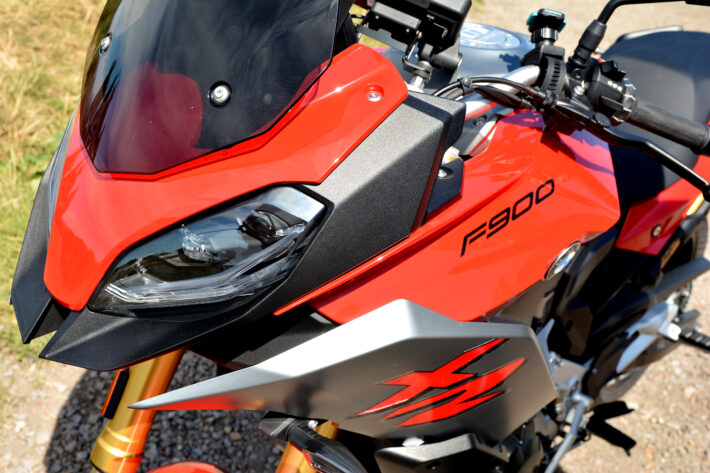
There’s a neat manual adjusting lever, which basically flips the screen between two positions. This is the optional 20mm shorter ‘sports’ screen though, and it’s almost uselessly low.
It looks neat but offers minimal protection from the wind, more like a flyscreen on a naked roadster than an adventure touring machine. A more expansive windshield would be a must for me I reckon.
Off the motorway, and I get a bit more of a feel for the F900. It’s no lightweight on paper at 219kg wet – just 7kg less than the S1000 XR, amazingly enough – but it feels nimble when changing direction on and off a roundabout.
The brakes don’t have massive initial bite, but there’s plenty of power there once you give it an ‘andful, and the front fork copes well on the brakes.
The Michelin Road 5 GT tyres are new for 2020, and claim to give even better wet performance.
Sadly, it was hot and dry throughout my time with the F9, so I didn’t get to try that out.
Pootling about in the dry, they worked well enough, but it didn’t feel like they were giving loads of feedback when pushing a bit harder.
I’d like to fiddle with the pressures a bit maybe, dropping a psi or two on the rear to soften things up a little. Given the choice, I’d swap them out for a more sporty option like the Michelin Power RS (which are also very good in the wet).
Over the next couple of weeks, I get better acquainted with the F900, and it’s a great, practical piece of work, especially around town.
The ESA set on ‘road’ soaks up speed humps a treat, while the low-down grunt and easy steering makes traffic splitting a breeze. One thing I remember from testing the F850 GS Adventure last year was the indifferent gearchange and hesitant quickshifter, and that seems to have passed over to the 900 too.
Sometimes, the quickshifter just doesn’t work, and I reverted back to little throttle tweaks to help move the cogs along.
The gear lever wasn’t quite in the right position for my size 10s, and I was wearing soft touring boots, so things might be better with a stouter boot or if you have a fiddle with the adjustment.
The sidestand is also a bit weird – it seems a bit short for the bike. Every time I park up, I have that panicky lurch as the XR goes down onto the sidestand just a couple of degrees too far, as if the stand has flipped up somehow…
You get used to that, and there is a centrestand fitted to this bike too, but if you park on uneven ground, you need to give it a proper heave to get it upright again.
While I’m having a bit of a moan, the engine doesn’t feel super-fast, and I think the all-up weight works against it a bit.
105bhp is a decent power output, and can propel you up past 120mph easily enough, but compared with the S1000 XR, you’re down 60bhp, and as mentioned, only 7kg less mass to move.
The S1000 motor is at the bonkers end of the scale obviously, but for me, I’d like to have had a bit more in terms of the power/weight ratio.
A look at the pricing scotches those thoughts completely though – the F900 XR is much, much cheaper than the S1000 XR, with a £4,400 difference in the starting price (£14,285 for the 1000, £9,825 for the 900).
That’s a big saving, and actually makes the F900 XR look like a bit of a bargain.
It’s in the same price ballpark as Yamaha’s Tracer 900, and while I prefer the Yamaha’s 10bhp stronger motor, the BMW’s overall package is probably superior, with the colour LCD, electronics package, BMW residuals and massive optional accessory list all on Munich’s side.
So – as I hand the F900 XR back, am I sold on the smaller option? Well, yes, but not totally.
For the money, the F900 is an excellent way into serious BMW ownership, with very good spec on brakes and electronics, and decent-but-not-stunning engine performance. It looks purposeful, though not pretty, and if your dealer does you a favour on some of the optional extras, you could build yourself a really capable upper-middleweight touring weapon.
Some hard luggage, top-spec electronics, ESA and sat-nav would all make the F900 cockpit a very capable place to sit.
For me though, as an idiot who likes to go too fast most of the time, I’d always be hankering for those extra two cylinders and that missing 60bhp. For real folk in the real world, though, the smaller F900 XR really does make a lot of sense.
BMW F900 XR TECH HIGHLIGHTS
Engine
BMW has taken the latest parallel twin motor from the F850 GS, and given it a capacity boost up to 895cc from 853cc, thanks to a 2mm overbore.
That boosts peak power to 105bhp, up 10bhp from the 850 GS. Compression ratio is upped, and the F 900 engine also gets stronger forged pistons rather than the cheaper cast parts on the 850.
The eight-valve, DOHC unit has ride-by-wire fuel injection, with built-in basic traction control, twin balance shafts, dry-sump lubrication system and a slipper clutch.
Frame
Diamond type, with the engine as a stressed member, fabricated from welded and pressed steel sheet.
Suspension
Longer travel suspension than F900 R roadster, with non-adjustable forks and rebound/preload adjustment on the rear monoshock. BMW also offers an optional ESA semi-active suspension setup – for the rear shock only though.
Brakes
Decent quality Brembo cast monoblock four-piston radial calipers, with 320mm discs up front, and a single-piston caliper with 265mm disc at the back. Standard ABS setup, with optional cornering ABS Pro.
Tyres
Our test bike came with very good Michelin Pilot Road 5 rubber, in sporty 120/70 17 and 180/55 17 sizes.
Rider aids
Neat colour dash with handlebar wheel controller, Bluetooth integration with phone, trip computer and loads more options (see below)
Optional accessories
As ever with BMW, you can spec the F900 XR till your heart’s content, and spend a fortune on top-quality gadgets and gizmos. We like cruise control, ESA semi-active suspension, heated grips, luggage, integrated Garmin satnav, quickshifter and Riding Modes Pro, which includes cornering ABS Pro, engine brake control and dynamic traction control.
‘Nice to have’ is the keyless ignition, which we’re getting used to, SOS emergency call setup, centre stand and cornering headlight.
There are a load of lowering and raising options to get the correct seat height for you: the XR can go as low as 775mm and as high as 870mm with different seats and suspension lowering kit.
F900 R
The F900 R is a naked roadster version of the XR, with the same engine and frame, shorter-travel suspension and no top fairing. It’s aimed at urban riders, and is also 10mm lower, so might be a better bet for the shorties amongst us.
BMW F900 XR SPECS
Price: from £9,825
Engine: 8v parallel twin, DOHC, liquid cooled, 895cc
Bore x stroke: 86x77mm
Compression ratio: 13.1:1
Max power (claimed) 105bhp@8,500rpm
Max Torque (claimed) 68ft lb@6,500rpm
Transmission: six speed gearbox, wet clutch, chain drive
Frame: fabricated steel diamond type
Front suspension: 43mm USD fork, optional ESA semi-active suspension
Rear suspension: aluminium box-section swingarm, preload and rebound-adjustable monoshock, optional ESA semi-active suspension
Brakes: dual 320mm discs, four-piston radial mount calipers (front), 265mm disc, single-piston caliper (rear), switchable ABS, optional ABS Pro
Wheels/tyres: cast aluminium/Michelin Pilot Road 5, 120/70 17 front, 180/55 17 rear
Rake/trail: 29.5°/105.2 mm
Wheelbase: 1,521mm
Kerb weight: 219kg
Fuel capacity: 15.5 litres
Rider Aids: Ride modes, ABS, colour dash, Bluetooth. Optional cornering ABS Pro cruise control, heated grips, quickshifter, keyless ignition, cornering headlight, SOS call
